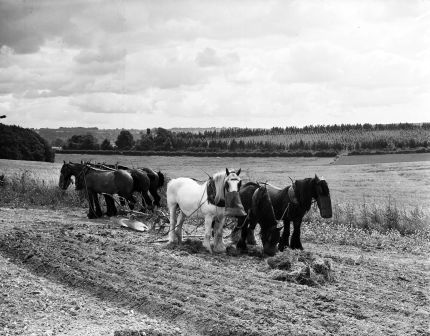
The initial phase of a new project is always a bit fuzzy, and seems to involve what can feel like endless circular discussions and feelings of not really knowing what you’re supposed to be doing or how best to go about doing something. Thankfully, we’re beginning to emerge from that phase with our new project, Countryside21 (although we’re not quite there yet!).
It originally felt like it was quite difficult to translate the three main strands of Countryside21 – collating and structuring digital content, improving keywording of digital content, and developing the MERL image bank (see my introductory post to the project) – into actual day to day tasks for Felicity and me to do. However, we haven’t been idle….
Our first step was to get to grips with the MERL Classification, which will be the starting point for developing how we keyword our collections. (Until now I’ve never paid much attention to the Classification and how, or why, it has been used.) This has involved looking at how the Classification has evolved over time – from its conception in the 1950s, to a more detailed version in the 1970s, and a simplified version in the 2000s. We’ve also been trying to find out about how it’s been used externally by other museums and institutions, and to consider how it compares with the Social History and Industrial Classification (SHIC) used by many other rural museums.
We’ve also been trying to get our heads around what terms we currently have in our ‘subject keyword’ thesaurus and the best way to go about tidying them up, as we know from our cataloguing for A Sense of Place that this is basically chaos (we’ve been ignoring it for the past year). We know that some terms shouldn’t be ‘subjects’ but should instead be categorised as ‘geographical keywords’ or ‘person and institutions’, and we also know that some ‘subjects’ appear multiple times in various forms and with various spellings, e.g. harvest, harvests, harvvest, harvesting etc.
Continuing with the idea of developing our keywording, we’ve been looking at how big commercial image banks such as Getty Images and i-stock keyword their images. We want to develop more emotive keywording based on the idea of ‘aboutness’, i.e. so not just what is actually depicted in an image, but also what the image is ‘about’ – ideas, emotions, concepts etc.
We’ve also started trying to collate all of MERL’s digital content and store it in one place, and to think about how to name image files in a standardised way which also relates to the object number or archival reference code. From next week, we’ll have a new volunteer project running to help us copy 500 CDs’ worth of images digitised as part of a 2002 New Opportunities Fund (NOF) project onto the server. In preparation for this, Felicity’s been trying automatic ways of renaming large numbers of files – otherwise it could take a long time!
I think it will take a few weeks before we feel like we’re fully underway with Countryside21, and for us to fully understand what we’re doing, but it feels good to be making progress.



